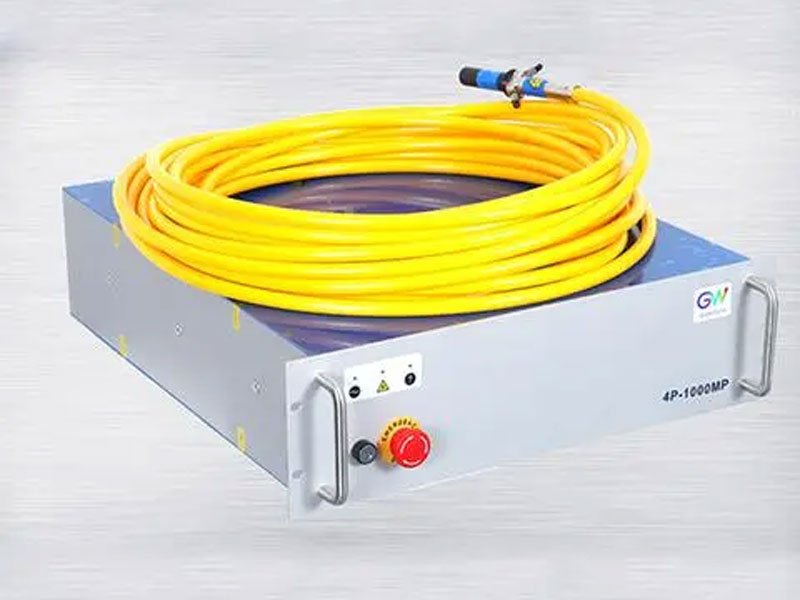Laser cleaning machines are widely used in the current industrial market. Many customers are not very clear about the choice of pulsed laser cleaning machines or continuous laser cleaning machines. This article will give an in-depth explanation of the information about CW and pulsed laser (continuous wave and pulsed laser). I hope it can help you.

Principle CW and Pulsed Laser
Continuous wave (CW) : lasers emit a constant and uninterrupted beam of light. The power output is also continuous and is usually measured in watts or milliwatts.
Pulsed lasers: emit light in short pulses rather than a continuous stream. These bursts, called pulses, have a specific duration ( in nanoseconds) and occur at a certain repetition rate. The average power output of a pulsed laser is lower than the peak power delivered during each pulse.
| Característica | Continuous Wave (CW) Laser | Pulsed Laser |
|---|---|---|
| Light Emission | Continuous beam | Short bursts (pulses) |
| Salida de potencia | Constant, measured in watts/milliwatts | High peak power, lower average power |

CW and Pulsed Laser Peak Power:
- Pulsed Lasers: Can achieve very high peak powers during the pulse duration because the energy is concentrated in a very short time. This can be orders of magnitude higher than the average power of the laser.
- Continuous Wave Lasers: The power output is constant and typically much lower in peak power compared to pulsed lasers.
Difference Between Cw and Pulsed Laser Control and Complexity:
- Pulsed Lasers: Typically involve more complex control mechanisms to manage the timing and duration of the pulses. This can include Q-switching, mode-locking, or gain-switching techniques.
- Continuous Wave Lasers: Tend to be simpler in terms of control, as the main requirement is to maintain a stable output.
Continuous Wave and Pulsed Lasers Technology
CW lasers are widely used in various fields due to their continuous emission of light. One significant advantage of CW lasers is their ability to deliver a constant power output over an extended period. This makes them ideal for applications that require a steady source of energy, such as laser cutting and welding in industrial manufacturing processes.
CW Laser and Pulsed Laser Application
| Característica | Continuous Wave (CW) Laser | Pulsed Laser |
|---|---|---|
| Power Delivery | Continuous beam | Short bursts (pulses) |
| Aplicaciones Típicas | Cutting, welding, consistent heating | Micromachining, ablating thin films, LiDAR |
| Example | CO2 laser for engraving | LiDAR system |
Pros and Cons of CW and Pulsed Lasers
Pulse laser
Advantages of pulse laser:
Pulse laser can release huge energy in a very short time, so it can cause special chemical or physical reactions in objects in a short time;
Disadvantages of pulsed laser:
Due to the extremely high energy density of pulse laser, the impact on the material is very strong and may sinter or damage the material.
Continuous laser
Advantages of continuous laser:
Continuous lasers can provide a continuous and stable laser beam and are widely used in medical and scientific fields;
Disadvantages of continuous laser:
Compared with a pulse laser, its energy output in a short time is relatively low, so it is not suitable for fields that require rapid heating.
Difference:
The biggest difference between pulsed laser and continuous laser is the difference in output waveform. The former outputs pulsed light, while the latter outputs continuous waveform light.
Pulse and Cw Laser Cleaner Comparison
Pulse laser cleaning machine: Pulse laser cleaning machine can produce instantaneous high temperature and high pressure, effectively remove contaminants on the surface of objects, and has a good cleaning effect. Because pulsed laser cleaners have less impact on the substrate, they can clean all types of surfaces more safely.
Continuous laser cleaning: Due to the low temperature of continuous laser, the cleaning effect is relatively weak and cannot handle fragile or easily meltable materials. However, continuous laser cleaning usually has a certain effect on some rough surface cleaning.
